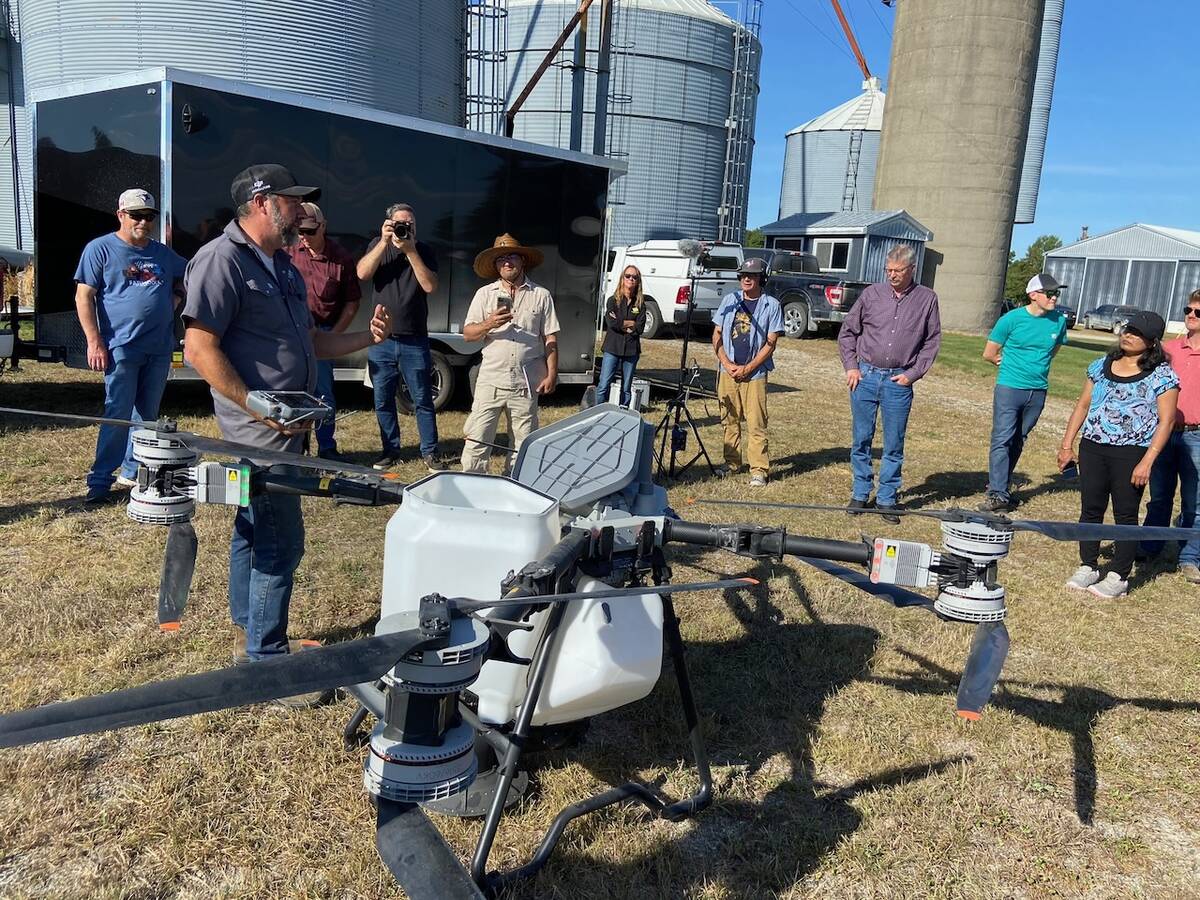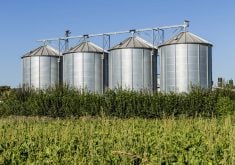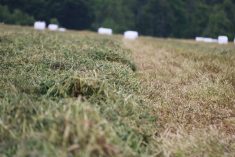The integrated pest management message being drummed into southern U. S. farmers sounds strangely familiar to a Canadian’s ears.
Rotating crops and herbicide modes of action has been at the top of the crop-management list on the Prairies for decades.
Whereas Prairie farmers typically follow three-to four-year rotation cycles, there are fields in this part of the U. S. that have grown the same crop for more than 60 years.
In fact, one of the world’s leading experts in the management of herbicide-resistant weeds says the Prairie grain industry is a shining example of how to use herbicide- tolerant technology sustainably.
Read Also

Drones jumpstart cover crop planting
Drones are a tool that can help farmers with cover crop planting in still-growing corn and soybeans.
However, Stephen Powles, director of the Western Australian Herbicide Resistance Initiative at the University of Western Australia in Perth, hastened to add the Canadian success story has as much to do with good luck as it does good management.
Canadian farmers gained access to three types of herbicide-tolerant canola almost simultaneously in the late 1990s and it is only recently that the technology has been expanded to other crops. He said Canada is a shining example of the good use of Roundup Ready technology. “Now that’s more by luck than anything because of the fact that it is a wheat-based system and we haven’t had Roundup Ready wheat.”
Gary Martens, a plant science instructor at the University of Manitoba, says the risk for developing glyphosate resistance in Manitoba is lower because farmers here practise a more diverse rotation and don’t use glyphosate as frequently in-crop.
“Even with the tight rotation of canola and wheat we still use it only 50 per cent of the time in-crop,” Martens said in an interview.
MIXING TRAITS
Although farmers here routinely use glyphosate as a pre-seed burn-off, it is usually mixed with another herbicide in order to control Roundup Ready canola volunteers.
“In studying the crop insurance database (2009) I have noticed that farmers are reducing the RR canola (29 per cent of canola) and increasing their Liberty canola (63 per cent of canola),” he said.
As well, a recent cross-trait exchange between Bayer and Monsanto is allowing farmers who wish to grow either company’s hybrid seed varieties can access the genetics with either trait. That allows for more rotation between the herbicide-tolerant systems.
But it can happen here. Martens said the highest risk of selecting for glyphosate resistance in Manitoba is in the corn and soybean area. “Ontario, where they practised exactly that rotation, does have glyphosate-resistant giant ragweed.”
Powles said the expanding availability of herbicide-tolerant crops is both a benefit and a risk to Canadian farmers.
While there is no known resistance here yet, with the exception of volunteer canola, resistant weeds aren’t far away. Kochia is suspected of carrying resistance in the Dakotas, and Ontario researchers recently identified resistant giant ragweed.
Powles said the mess U. S. farmers are dealing with is a cautionary tale for Canadian farmers.
“I think they have a great opportunity to look south and say ‘we don’t want to be there. That’s an early yellow canary to tell you what can happen.”
ASSESSMENT TOOL
Monsanto has recently established an online assessment tool to help farmers determine whether they are encouraging the evolution of glyphosate resistance on their farm. The website www.weedtool.com asks farmers 10 questions about how often they apply Roundup (Monsanto’s brand name for glyphosate) and how effective it is.
After assessing the risk, the site offers farmers advice on how to reduce it.
University of Arkansas weed scientist Jason Norsworthy offered several tips for preventing the development of resistance that are as applicable on the Prairies as they are in the South.
LAURA RANCE
The key is removing the word “simple” from weed control messages.
“We’ve heard from a company that wants to talk about simplicity. To a certain extent we are going to have some complexity in this system if we are going to make it work.
“I am talking multiple modes of action, I am talking rotating crops.”
Focus on controlling the weed seed bank. “You need to target the most problematic or even high-risk weeds in your fields and prevent them from going to seed.”
Use multiple modes of action and different timing intervals, even if the fields appear to be free of weeds.
Timely application is key. “Spray them when they’re small.”
Encourage rapid crop canopy formation.
Keep tillage in your tool box. “I’ve never seen a weed yet develop resistance to cold steel,” Norsworthy said.
“I know people cringe and I’m not saying do that on 1,000 acres, but if I’ve got pigweed on a half-acre or one acre there’s definitely a value to going out and doing that.”
Focus on controlling weeds in the full rotation cycle, not in annual crops.
Use recommended herbicide rates.
———
“I’veneverseena weedyetdevelop resistanceto
coldsteel.”
– JASON NORSWORTHY















